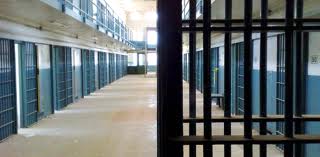
Commentary: Texas Criminal Justice Model A Resounding Success
Policies aimed at curbing recidivism have saved money while keeping crime rates historically low
Texas may have the reputation of being tough on crime, but the recent success of its policies proves that it is also smart and efficient. Marc Levin of the Center for Effective Justice, in conjunction with Right on Crime, explains how Texas has managed to reduce its incarceration rate while saving taxpayers hundreds of millions and reducing crime.
Since 2005, Texas has seen crime drop by double digit levels, the lowest since 1973, while adult incarceration has concurrently decreased by 9 percent. In the process, taxpayers have been relieved of shouldering over a billion dollars in taxes. This success has been predicated on two programs in particular.
In 2005, the state allocated $55 million to probation departments which would emphasize reducing recidivism from probation to prison by 10 percent. This was achieved by increasing monitoring of recent parolees, more consistent application of graduated sanctions, and greatly decreasing caseloads per parole officer to allow more attentive observation of subgroups such as mentally ill parolees. Overall, $119 million in tax dollars was saved.
The second program, initiated in 2007, was to appropriate $241 million towards alternatives to prison for low-level, non-violent offenders. Prior to this, the Texas Legislative Budget Board had recommended the state spend $2 billion on 17,332 new prison beds to accommodate prisoners. Instead, the state wisely invested in programs to help drug addicted and mentally ill prisoners, and in halfway houses for the recently released. By assisting in the rehabilitation of parolees, rather than anticipating their return to prison, the justice system has seen the number of revocations fall.
Texas’s criminal justice reforms have been so effective that in 2011, the state was able to close down the entire Sugar Land Central Unit prison. More measures are still on the way, though, including new bills which incentivize both local governments and prisoners to engage in degree programs and job training.
Louisiana is in dire need of implementing similar reforms. As has been widely reported, Louisiana has the highest incarceration rate in the nation, which is unacceptable and economically disastrous. The debate over constructing a new, larger prison complex in New Orleans illustrates the need to transform the local criminal justice paradigm. Texas is testament that preventing recidivism rather than expanding jail sizes saves both money and lives.




